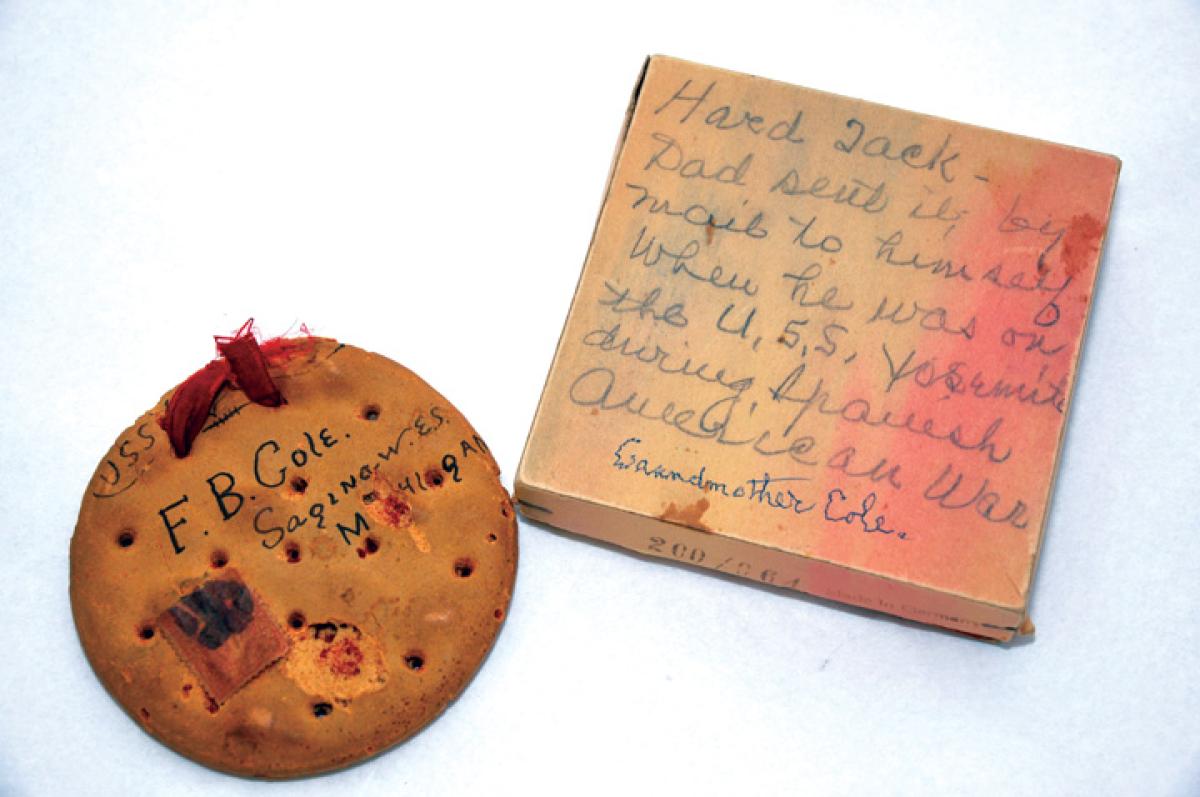Anyone who’s heard of (or perhaps even tried) the Twinkie-on-a-windowsill experiment may want to ponder an even more remarkably durable foodstuff: good old hardtack, that staple of many a seafarer down through the ages. The name derives from “tack,” British nautical slang for food, combined with the obviously appropriate adjective. Hardtack has been called many other things as well, from “sea biscuit” to “molar breaker.” Here, from the collection of the Naval History and Heritage Command, is a piece of hardtack more than a century old and sporting some provenance. Sailor F. B. Cole of the U.S. auxiliary cruiser Yosemite opted not to chomp down on the nourishing morsel but to address it, stamp it, and send it home to Saginaw, Michigan, as a souvenir of his Spanish-American War service. A converted merchant steamer, the Yosemite (below) saw some sharp action in the conflict. While on blockade duty off San Juan Harbor, Puerto Rico, on 28 June 1898, she fired on a vessel trying to sneak in, thereby launching a shooting match with Morro Castle and three Spanish gunboats. The unarmored and outgunned American ship sped right into the enemy’s range, managed a firing rate of 5-to-1 over the Spanish, and emerged untouched and victorious. Maybe it was something in the biscuits.
Quicklinks
Receive the Newsletter
Sign up to get updates about new releases and event invitations.
×
You've read 1 out of 5 free articles of Naval History this month.
Non-subscribers can read five free Naval History articles per month. Subscribe now and never hit a limit.



